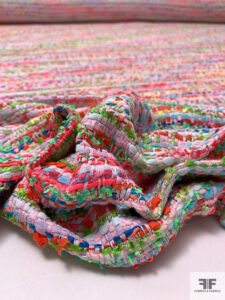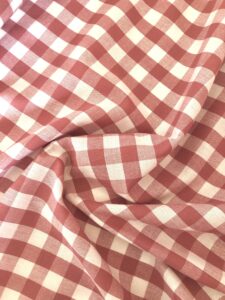What Happens When You Dye Oxford and Organza with Violet Color?
Fabric compatibility is crucial in fashion and sewing, as it affects the final product’s appearance, durability, and care requirements. Oxford and organza are two popular fabrics, each with distinct characteristics. This article explores what happens when you dye these fabrics with a violet color, focusing on their compatibility, properties, benefits, challenges, and maintenance.
Compatibility Analysis
Compatibility Verdict: NO
Unfortunately, Oxford and organza are not ideal companions when dyed together. Their differences in texture, weight, and care requirements can lead to complications. Oxford, a heavier, more durable fabric, contrasts sharply with the delicate, sheer nature of organza. These differences can result in uneven dye absorption, color bleeding, and maintenance challenges.
Key Factors
- Texture and Weight: Oxford is heavier and more textured, while organza is light and sheer.
- Stretch: Oxford has minimal stretch; organza is even less stretchy.
- Care Requirements: Oxford can withstand more rigorous washing, whereas organza requires gentle care.
- Durability: Oxford is more durable than organza, which is prone to tearing.
Fabric Properties Comparison Table
| Property | Oxford | Organza |
|---|---|---|
| Fiber Content | Cotton or blend | Silk or synthetic |
| Weight and Thickness | Medium to heavy | Light and sheer |
| Breathability | Moderate | High |
| Stretch and Elasticity | Low | Very low |
| Wrinkle Resistance | Moderate | Low |
| Care Instructions | Machine wash, iron | Hand wash, low iron |
| Durability | High | Low |
Benefits of Mixing These Fabrics
While challenging, mixing Oxford and organza can offer unique benefits:
- Enhanced Texture and Visual Interest: The contrast between Oxford’s texture and organza’s sheen creates a dynamic look.
- Improved Comfort and Performance: Combining fabrics can enhance breathability and comfort.
- Better Drape and Movement: Organza adds flow and movement to Oxford’s structure.
- Cost-Effectiveness: Using organza as an accent can reduce costs.
- Seasonal Versatility: The combination can suit different seasons by balancing warmth and lightness.
- Design Possibilities: Offers creative opportunities in fashion and home decor.
Potential Challenges
- Different Shrinkage Rates: Oxford may shrink more than organza, causing fit issues.
- Conflicting Care Requirements: Oxford’s durability contrasts with organza’s delicacy.
- Texture Clash or Pilling: The fabrics may not sit well together, causing pilling.
- Seam Puckering: The weight difference can lead to puckered seams.
- Color Bleeding or Fading: Dye may not adhere evenly, causing color issues.
Solutions
- Pre-wash fabrics separately to manage shrinkage.
- Use color catchers to minimize bleeding.
- Select compatible dyes for each fabric type.
Sewing & Styling Tips
- Sewing Techniques: Use French seams for a clean finish.
- Needle and Thread: Choose a fine needle (size 70/10) and polyester thread.
- Interfacing Needs: Use lightweight interfacing for organza sections.
- Seam Finishing: Consider bias binding for neat edges.
- Pattern Selection: Opt for designs that highlight fabric contrast, like panel dresses.
- Styling Ideas: Pair with solid colors for a balanced look in fashion and decor.
Care & Maintenance Guide
- Washing Instructions: Hand wash organza; machine wash Oxford on gentle.
- Drying Recommendations: Air dry both fabrics to prevent damage.
- Ironing and Steaming: Use low heat on organza; medium on Oxford.
- Stain Removal: Spot treat organza carefully; Oxford can handle more robust methods.
- Long-term Care: Store in a cool, dry place to prevent fading and damage.
FAQ Section
-
Can you wash Oxford and organza together?
- It’s best to wash them separately due to their different care needs.
-
Will Oxford shrink more than organza?
- Yes, Oxford is more prone to shrinkage.
-
What needle size should I use for sewing these fabrics together?
- Use a size 70/10 needle for delicate handling.
-
Can you mix Oxford and organza in one garment?
- Yes, but consider their care and structural differences.
-
How do you prevent fabric issues when combining these fabrics?
- Pre-wash separately, use compatible dyes, and handle gently.
-
Is it okay to mix Oxford and organza for upholstery?
- It’s not recommended due to organza’s delicacy.
-
What’s the best way to finish seams with these fabrics?
- French seams or bias binding are ideal for a clean finish.
In summary, while dyeing Oxford and organza with violet may present challenges, understanding their properties and employing careful techniques can result in a stunning, unique combination. Whether for fashion or home decor, this blend offers creative potential for those willing to navigate its complexities.




Leave a Reply